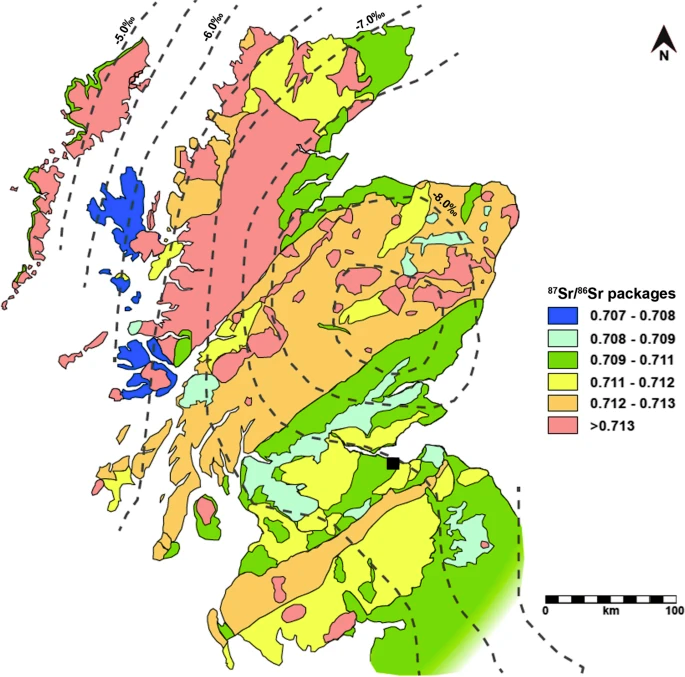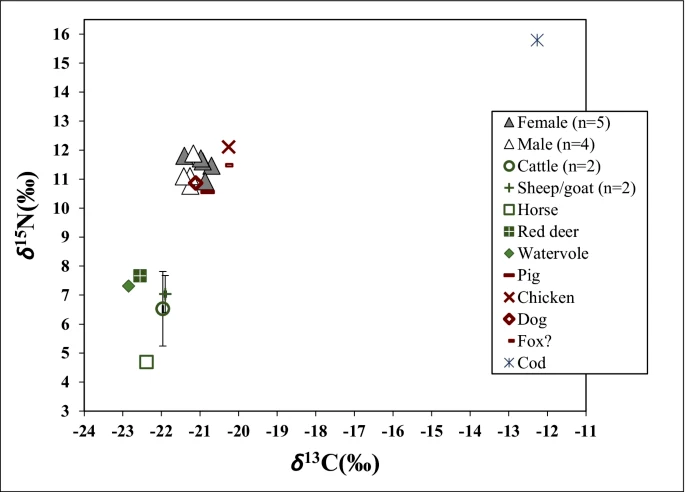https://link.springer.com/article/10.1007/s12520-022-01509-2
The Bodies in the ‘Bog’: A Multi-Isotope Investigation of Individual Life-Histories at an Unusual 6th/7th AD Century Group Burial from a Roman Latrine at Cramond, Scotland
https://link.springer.com/article/10.1007/s12520-022-01509-2
The Bodies in the ‘Bog’: A Multi-Isotope Investigation of Individual Life-Histories at an Unusual 6th/7th AD Century Group Burial from a Roman Latrine at Cramond, Scotland
buffy said:
https://link.springer.com/article/10.1007/s12520-022-01509-2The Bodies in the ‘Bog’: A Multi-Isotope Investigation of Individual Life-Histories at an Unusual 6th/7th AD Century Group Burial from a Roman Latrine at Cramond, Scotland
Interesting, ta.
> Group Burial from a Roman Latrine
Since when were people buried in latrines?
> 6th/7th AD
> Group Burial from a Roman Latrine
Since when were people buried in latrines?
> No intra-group dietary variability was detected, and the results are similar to other contemporary populations from southern Britain.
Good.
> Variations in dietary trends, especially with reference to marine fish consumption, were identified in a number of publications focusing on past populations of England
Yes. I’ve heard about this.
> dietary (δ13C, δ15N, δ34S) and mobility (87Sr/86Sr and δ18OCARB) data
Interesting. Not carbon-14 I notice, so that was probably part of the dating procedure.
> evidence of interpersonal violence demonstrated by cranial trauma in the case of four individuals
Hence the burial in a latrine, I get it.
> three main groups of people occupied the area; the Scotti in Dál Riata to the west, the Picts in most of northern Scotland and the Britons in the south
OK. The end of Roman rule in Britain was around the year 410, so not long after that.
By 540 AD we have something like this. That confirms the area as occupied by Dal Riata from Ireland, Picts and Britons. The Anglo Saxons hadn’t quite made their way that far north.

> zooarchaeological evidence suggests the importance of domesticates, in particular cattle, during early medieval times in Scotland. In popularity, cattle were followed by pigs, sheep and goats. Agricultural production of barley and wheat became increasingly important as well. There is little evidence of the exploitation of marine food sources during this time period.
Good.
> The early middle ages were a period of mass migration throughout Europe
And many killings. Population decreased precipitously.
> atmospheric CO2 is depleted in carbon 13C in comparison with carbon originating from oceanic sources, marine organisms have elevated levels of 13C
That agrees with what I’ve heard before.
> Nitrogen isotope (δ15N) values of various organisms, on the other hand, differ based on their trophic level, increasing with ~3–5 ‰ with each step up the food chain
Nice. I hadn’t heard that.
> Terrestrial organisms tend to have δ34S … close proximity to the sea and saline environments can elevate these values. And sulphur isotope ratios depend on the local lithology, in addition to dietary information, it is possible to predict the sulphur isotopic values of different regions, allowing to identify individual mobility
> Strontium isotope depends on the underlying lithology.
> oxygen isotope analysis is often utilised alongside strontium as a secondary indicator of geographical origin. The δ18O values of precipitation …

Results below, so the people ate dogs. (Just kidding)
People and dogs ate the same food. Which wasn’t fish (cod).
Since nitrogen increases further up the food chain, the people could have eaten cattle or sheep.

mollwollfumble said:
> Group Burial from a Roman LatrineSince when were people buried in latrines?
At that time in Scotland. The article explains.